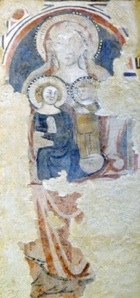

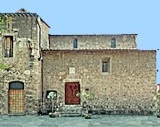
Architectural fragments incorporated into the facade of this church suggest that the first church on the site was built in ca. 800. Surviving elements of Romanesque architecture point to its rebuilding in the 12th century (perhaps after Archbishop Christian of Mainz sacked the city in 1174).
A church here that was dedicated as San Pietro de Riconis (or Bitonis) provided a base for a community of Augustinians who arrived at Terni in 1252, before they moved to SS Siro e Bartolomeo (in 1254) and then to San Pietro (in 1287). The The Knights Hospitaller (of Jerusalem, Malta and then Rhodes) took over the complex towards the end of the 13th century. The dedication changed to Sant’ Alò changed at some point between 1466 (the last documented reference to San Pietro de Riconis) and 1487 (the first documented reference to Sant' Alò). The new dedication refers to St Aloysius, the patron saint of goldsmiths and blacksmiths.
[Subsequent history]
In “Terni” (1910), Luigi Lanzi complained that, under the auspices of the knights, it functioned as a coal cellar. He embedded a number of Roman archeological fragments (which he had discovered in the orchards near the Duomo in 1904) in the walls of the church and the adjacent house (see below).
After a long period of secular use, the church was acquired by the diocese in 1959 and re-consecrated after its restoration in 1960. It is now the seat of an Orthodox community from Romania.
Exterior
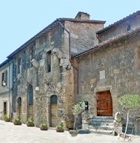

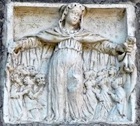
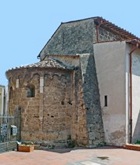

-
✴part of a garland frieze, with the head of a cow to the right; and
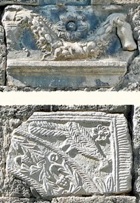
-
✴a relief of a peacock eating grapes, to the right of it.
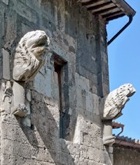
Interior
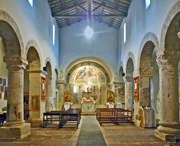
The interior is in the form of a nave and two aisles, with a semi-circular apse preceded by an entrance arch.
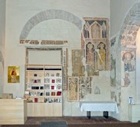
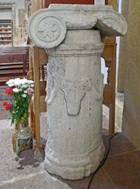
The frescoes on the walls have been recently restored.
Early Frescoes (12th century)
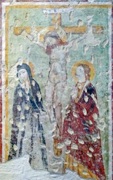
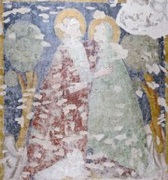
These two damaged frescoes, which are among the oldest to survive in Terni, depict:
-
✴the Crucifixion with the Virgin and St John the Evangelist, on the right wall, to the left of the entrance; and
-
✴the Visitation, on the pilaster opposite.
Frescoes of the apse (15th century)
Coronation of St Clare (ca. 1490)
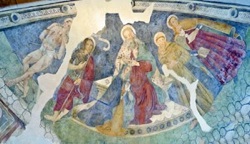
This fresco in the lunette of the apse, which is attributed to Bernardino Campilio, depicts God the Father welcoming St Clare into Heaven, as SS Sebastian, John the Baptist, Francis and Lucy witness the scene. This unusual representation of St Clare suggests that the church belonged to Franciscan nuns at the time that the fresco was painted.
Saints (1493)
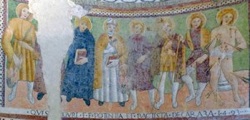
The inscription under this fresco of standing saints indicates that "Potentia et Bactista de Carara" commissioned it in 1493. The presence of SS Roch and Sebastian to the right suggests that it was a votive image connected to an outbreak of plague.
Other Frescoes in the Apse
These include two that are dated:


-
✴a deacon saint (1426); and
-
✴a female martyr (1482).
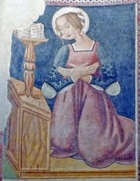
SS Sebastian and Roch (15th century)
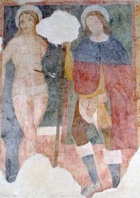
St Bernardino of Siena (1484)
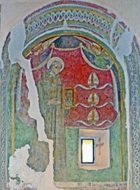
Female Martyrs (15th century)
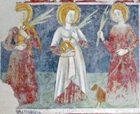
Frescoes on the left wall (15th century)
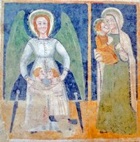
-
✴an angel making peace between two noble men, whose swords stand behind them;
-
✴the standing Madonna and Child.
Mystical Marriage (15th century)
